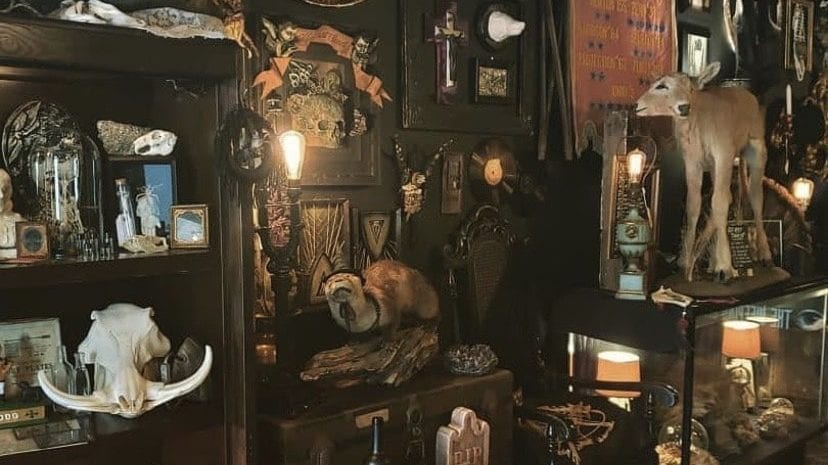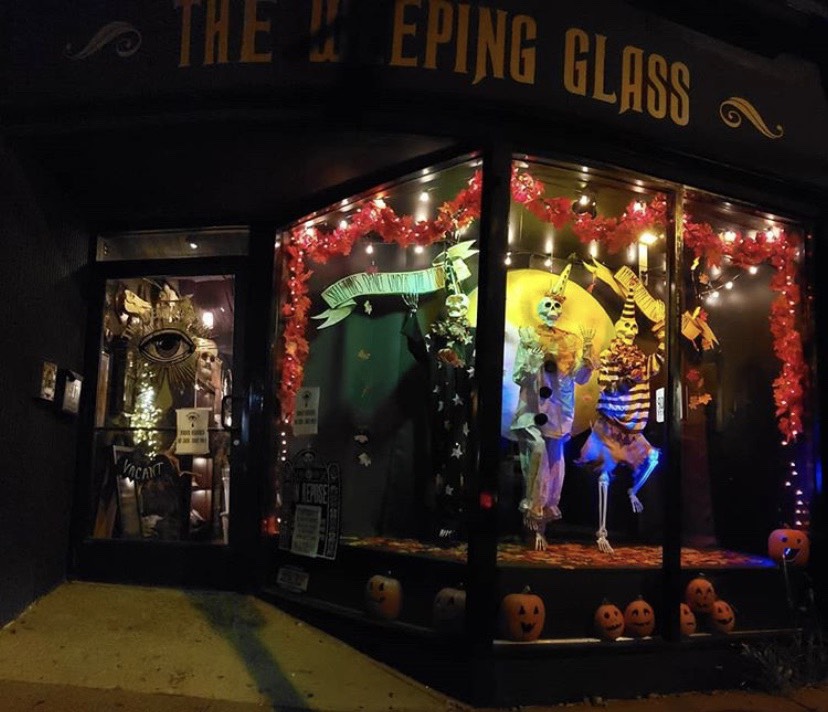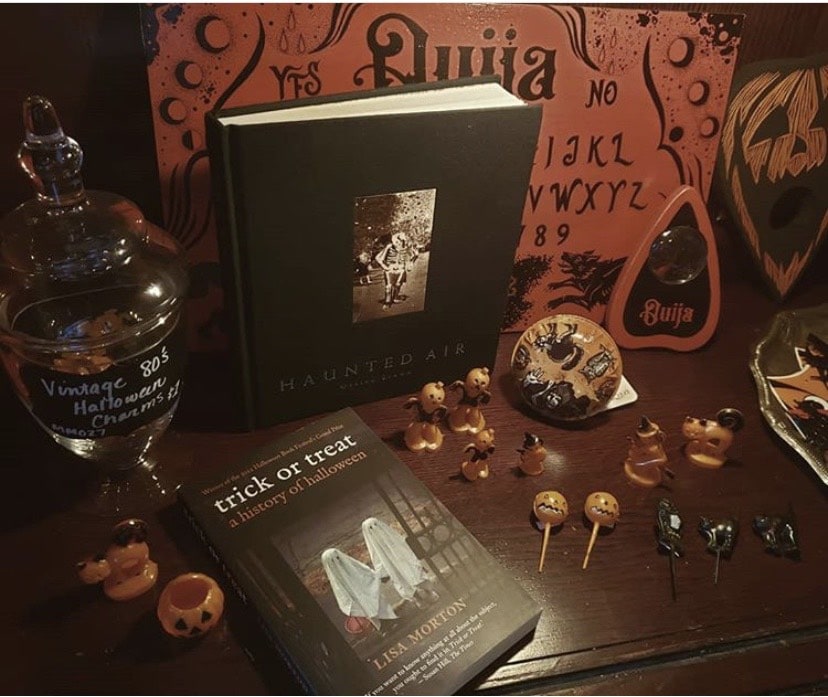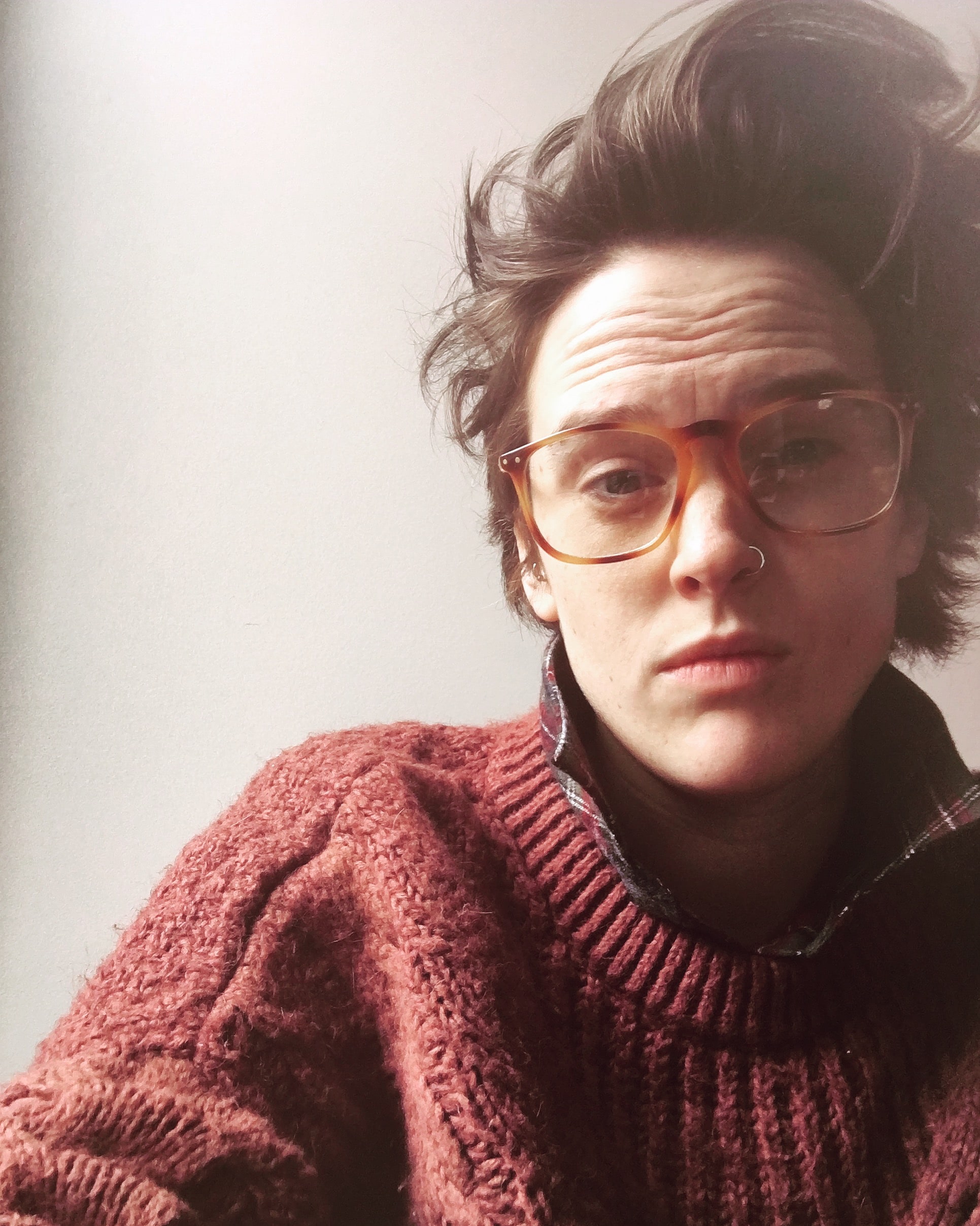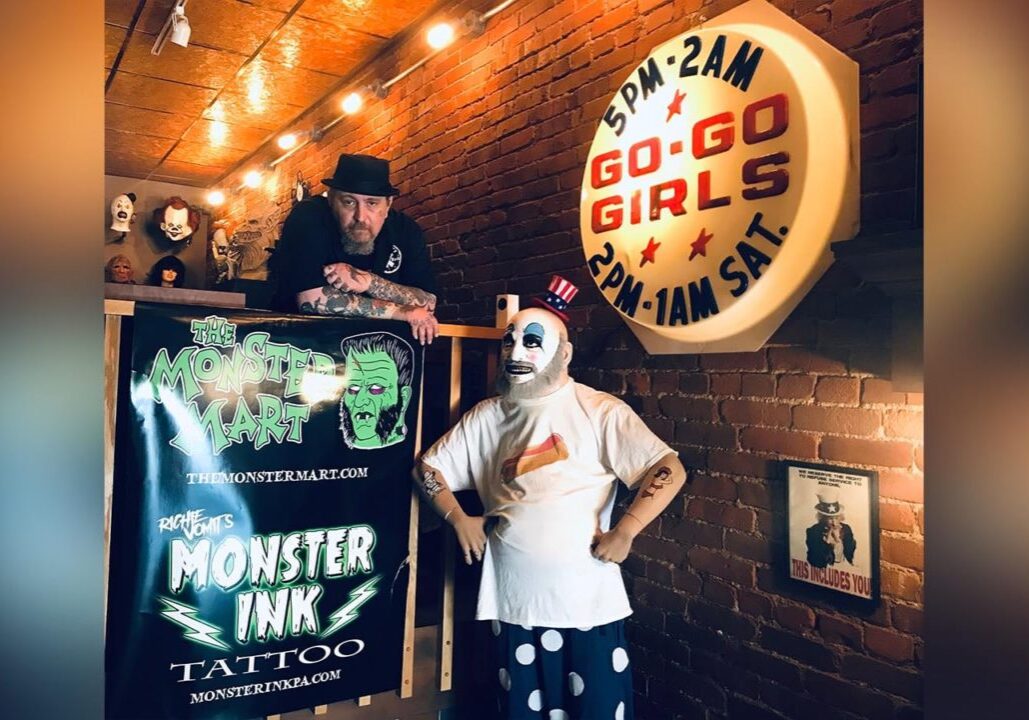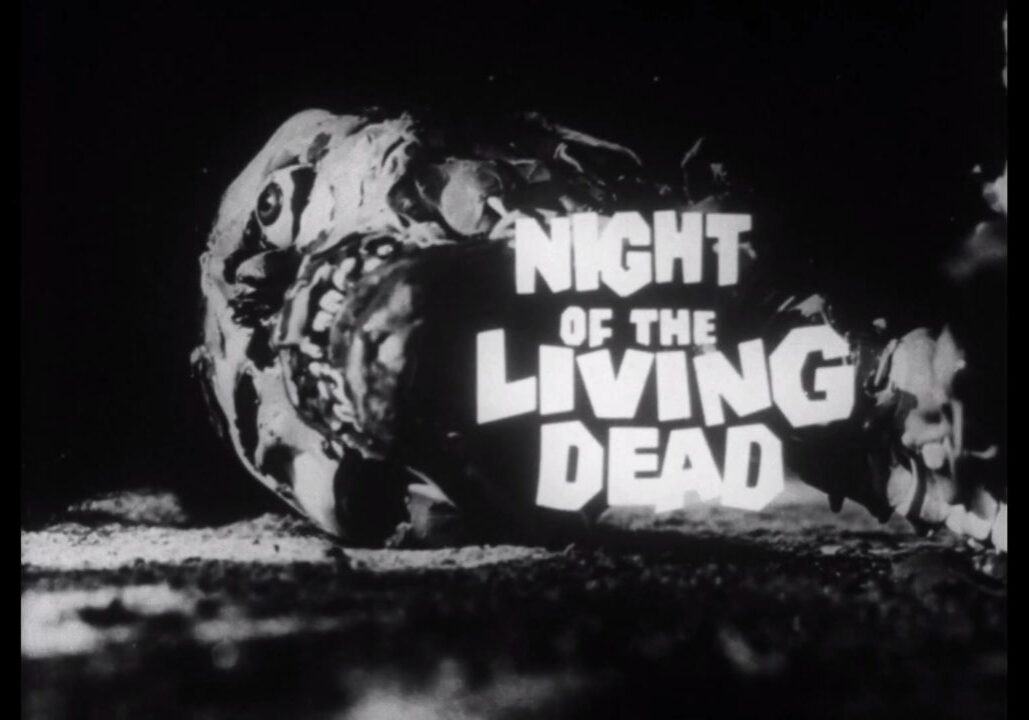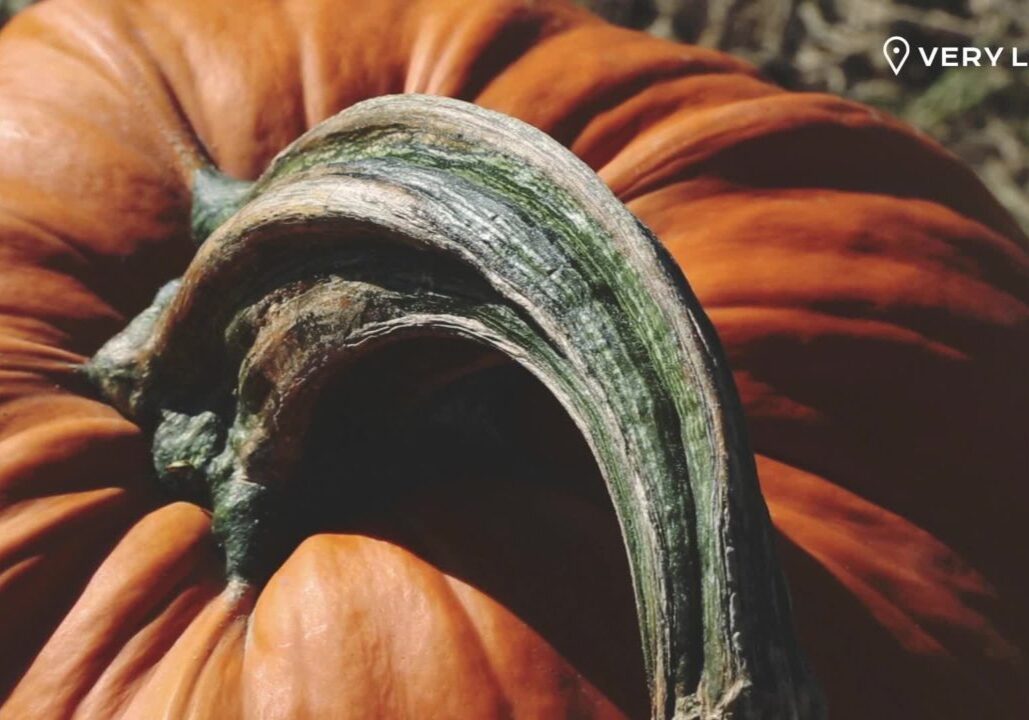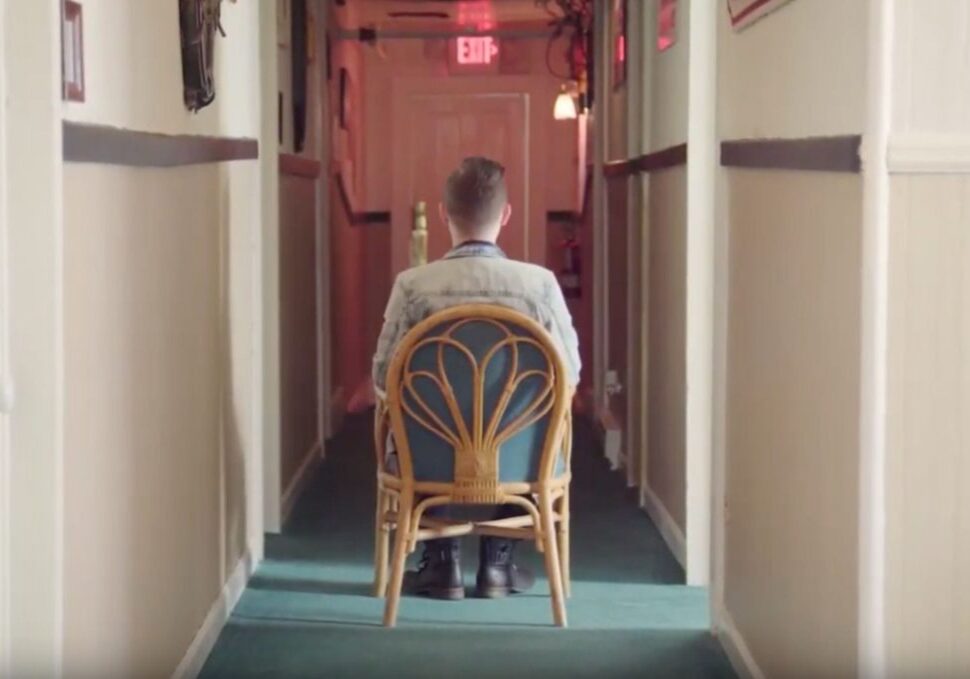There’s a truly weird essence encoded into the DNA of Pittsburgh. Whether it goes unspoken or it is fully and raucously embraced, it’s an undeniable—it’s an essence that manifests in the gritty eclecticism and eccentricity of Yinzers; in the prism of neighborhoods with their own quirks and mysteries; in the eerie architecture of Carrie Furnaces and “abandoned” derelict churches and factories (and the haunted former Dance Moms studio); and in the exquisitely bold and bizarre art and performance subcultures that have a panache for the avant-garde, gory, edgy and aberrant. Like the undead compulsively flock to the Monroeville Mall in “Dawn of the Dead,” Pittsburgh is instinctively drawn to a core weirdness.
And, yet, for all of Pittsburgh’s wonderful weirdness, there was a noticeable dearth of shops, boutiques or businesses devoted to eccentric and odd art, expressions and collectibles. Until, that is, The Weeping Glass crawled from the murky bowels of your darkest, wild dreams to set up shop in Pittsburgh’s Allentown neighborhood. (Indulge me the hyperbole, it’s Halloween month and I’ve been quarantined for what feels like longer than I’ve been alive.)
In honor of the High Holy Haunted Month and to celebrate The Weeping Glass’s third year as the unrivaled purveyor of the all things haunting, morbid, quirky, and mystifying, I “talked” (because what is talking in 2020, anyway?) to multi-talented artist, horror and viscera expert, and The Weeping Glass co-owner Kelly Braden about the oddity shop.
A native Pittsburgher, Braden has established an impressive career as a physical performer and visual artist, creating her own devious masterpieces in multiple media, being a member of Kabarett Vulgare Pittsburgh, and occasionally walking on broken glass in her downtime. Braden, who can boast some having some of my favorite horror-cinema-inspired tattoos (and I have a tattoo of Nosferatu on a unicycle, so I’m an expert), is often identified as Macabre Noir, and is well-known for co-creating and frequently performing in Morose & Macabre’s Atrocity Exhibition with her best friend and creative/business partner Aaron (the Morose to her Macabre). From 2008-2018, the duo orchestrated the lavishly diabolical and decadently multidisciplinary spectacle, structuring the high-concept, frightfully fun show around a different ghoulish theme (Dante’s Inferno, Vaude-Vile Asylum, etc.) each year. Atrocity showcased conceptual burlesque, puppetry and marionette artists, multimedia visual art, sword and knife play, contortionists, musical performances and more from artists across the country and notable Pittsburgh luminaries, in addition to featuring an agora replete with artists, makers, and small businesses selling appropriately unusual wares.
Not one to let morbid curiosity and a love of gloom and the unknown subside, Braden’s launched her most recent endeavor, The Weeping Glass in 2017. Nestled in the uniquely goth/metal/doom pocket of Allentown, The Weeping Glass started as an opportunity for the two friends and collaborators, who are both artists, to shift from relying solely on Etsy and travel roadshows, and instead share their creations in a designated space. Furthermore, Braden’s affinity for curation of unconventional historical artifacts, found materials, antique furniture and books, questionably unsafe old tools and more could come to fruition in a physical space that they controlled. And so Pittsburgh’s premier oddity shop was born.
Characterizing The Weeping Glass as an oddity shop doesn’t quite do it justice—the shop is part Wisconsin Death Trip; part historical-curio of medically-confounding, sensational, or unreal relics, art, and memorabilia from a bygone era; part art studio for fantastic and phantasmagoric designs; and part what you’d imagine Glenn Danzig’s interpretation of Sur la Table might be. Most importantly, though, The Weeping Glass encapsulates Braden’s artistic ethos of embracing the incongruous symmetry of beauty and the macabre and the enthrallment that the strange and frightful things can allow if you open yourself to it. The Weeping Glass challenges and delightfully defies conventions and occasionally forces you to confront you unutterable fears of the antique dolls at your grandparent’s house that whispered curses in your ear while you slept.
Below, Braden shares the evolution of The Weeping Glass and what it’s like to run Pittsburgh’s sacred grounds of strange.
Creatively, what was your journey in honing your perspective/aesthetic, and finding which media you really thrived in?
My art is very driven by a fascination of all things considered strange, unusual, or dark to the average human. Death has been a common and tragic theme in my life starting at a very fragile age. Everyone was very afraid to talk to me about the experiences I had with sudden passings….and everyone tip-toed around the subject matter after each event. Something so inevitable and final that needed to be understood, talked about, and dealt with in a healthy manner became something very taboo and I was treated like an egg that would shatter at any moment. Why? We, as a western culture specifically, have abandoned this very real part of the life circle. Mourning processes, preparation, and the celebration of life in the wake of death is as important as birth.
A lot of my questions and my confrontation of the subject matter began to really purge itself in my work. First, with painting. I painted some really tough images, usually dealing with the female form in a very dismantled state which was definitely a reflection of the me that no one saw. The one I had to live with inside.
After the passing of my grandmother, who was a doll maker, I inherited her sewing machine. I started experimenting with various types of clay and taught myself (with guidance from my mum) how to sew….kind of. That’s when I began my obsession with creating small, strange effigies. Tangible, 4-dimensional creatures. I’ve been hooked ever since.
What have been some of your most crucial influences? How have those influences impacted your art and creative processes?
Stop-motion artists and puppet makers like The Quay Brothers and their mentor, Jan Svankmajer, were a HUGE influence on me. The first time I watched Street of Crocodiles by the Quays was life and art-altering for me. Svankmajer’s Faust was also a mind-blowing event. The characters and worlds created for those characters to dwell were aesthetically, everything I had been creating and wanting to convey. The use of upcycled objects, dust, rust, age, and varying levels of decay created were something that I had been trying to teach myself through trial and error for years. Micheal Demeng is another artist who I deeply admire. He works in found object/altered assemblage and is able to create new works of art that appear to have withstood centuries. Everything he does tells a defined story through his finish techniques and endless imagination, use of form, and eye for composition.
A lot of folks know you from the physical performance world, especially through Atrocity Exhibition—how did that world influence and commingle with the beginnings of The Weeping Glass? What were some of the common denominators?
[….] we were traveling with our art from 2008-2009 and setting up one night shows at venues with live burlesque and sideshow…that planted the seed for Atrocity and made the connections with artists and entertainers alike. When we were in the beginning phases of opening the shop we had ZERO budget. We reached out to our visual art friends from both Atrocities past and social media to get the shop filled with all of the rad stuff they had to offer. We’ve also employed a lot of Atrocity entertainers to help out as live performers for everything from living window displays, to live acts during night markets, and even as our Eastern European holiday monsters during Yule parties. We’ve made lifelong friends and family members and we fully intend on taking them wherever we go with our endeavors.
How did the seeds of The Weeping Glass get planted?
I’m obsessed with oddities shops and a collector of everything and anything that has a weird history or subject matter, including art, and there is none of that in Pittsburgh. Nowhere to go that specifically caters to the dark and weird. We created a sold-out event based around our love of the macabre, so we knew there were people like us who were into what we were into. Even while we were solely online selling our wares, we got inquiries about “where our physical location was.” The idea of not have to unload and load all of our stuff and have a permanent place to house our work and the work and collectibles of our friends was very appealing.
Easy question: Why the name “The Weeping Glass”?
Couple of reasons…the name, itself is actually the decaying process of glass. Any time you see that natural corrosion on the corners of old glass and mirror, it is “weeping.” The antiques we have in the shop are purposely bought for rust, weeping marks, and other natural states of decay in old objects. There’s a lot of beauty in that texture and finding those things new homes and giving them new lives is a thing of beauty, itself. Besides….a death positive, sad kid store with “weeping” in the name just seemed too perfectly apropos.
On top of all this, and taking a step back to inspirations of mine, the Quay Brothers did a short film in the Philadelphia Mütter Museum called “Through The Weeping Glass” in which they used the natural decay of glass cabinets holding obscure medical history as a focal point.
So….lots of reasons, I guess.
When and how did the move to make The Weeping Glass into brick and mortar shop transpire? Was Allentown the desired spot from the getgo, and, if not, how did that location come to be?
I’d been running pop-up odd art shops as a “Most Wanted” resident artist in the Waterfront and occupying empty storefronts. When that project came to an end, I really missed having a shop and finding new stuff to fill it with. I’d had the itch to open a permanent location since. Aaron (my bff and business partner) had just moved back from California and I really wanted to ignite a new project with him. Every time I drove past an empty storefront I took a picture of the number. When I finally started calling and getting rental quotes, I was really disheartened at the astronomical storefront rent in the booming retail areas of Pittsburgh.
A friend of mine had a business in Allentown and a few others were getting ready to open in the same neighborhood. There were a LOT of empty storefronts and the rent was reasonable. Bonus, the Hilltop Alliance has a ton of programs to try to revitalize the business district….all signs were pointing to “yes, it’s time.”
You have quite a bit of experience working in very distinct PGH neighborhoods and communities—how would you characterize running a business in Allentown?
Allentown is a patchwork quilt of food, business, and people who all work really, REALLY hard and pour their heart and soul into their businesses in a neighborhood off the beaten path. We’re damn proud to call each and every one of them friends and neighbors.
At first, we were not well received. We’re a really odd shop and we raised a lot of eyebrows when we plopped our black storefront full of skeletons down in the middle of Warrington Avenue.
But we did the work. We went to community meetings and introduced ourselves. We became involved hosting successful neighborhood events that not only included but brought new business to the shops and restaurants that were already in the area. We made friends with the other established business owners and collaborated with them as much as possible.
What have been some of the successes/benefits (or joys, even!!!) of running the shop in the past three years? What have been some of the challenges?
We’ve met and worked with some of the coolest people we’d have never known otherwise. That’s number one.
But there’s something about pouring your entire being into a business and having people enjoy the work. And there’s definitely something to be said about creating a weird space where people feel safe to completely be themselves with zero judgment. We’re open about our depression, anxiety, and our dark sense of humor…and it honesty is embraced by everyone else who lives and feels the same way.
The challenges? Not many. Mostly just the daily grind of business that comes with the territory. Taxes, the roof springing a leak, being an owner-run establishment that has to close down when we take a vacation or get sick because there’s no “staff.” But, we’re lucky enough to have friends to jump in and help us whenever the going gets tough.
The Weeping Glass is undoubtedly a shop that mostly attracts a clientele that either knows you, knows what they’re looking for, or has an understanding of what a modern oddity shop is all about, but how do you describe the shop and the art to folks who aren’t hip to what The Weeping Glass is all about?
“This place is scary” is usually the alert that someone completely doesn’t understand and misunderstanding is met with fear nine times out of 10.
I simply ask why. I take the time to talk to people and educate them on the items in the shop and why they are there. Introduce the history. Explain the weird origin.
Every single item that comes through our doors has an unusual story attached to it. There’s a lot of weird history that you didn’t necessarily learn in school. It’s fascinating. Quack medicine and the bizarre trial and errors of the past that built modern medicine, strange anomalies that happen in nature and the biological reasoning behind it, past rituals and traditions that died out over the past century….things your great grandparents did that you would find completely bizarre today….and the WHY of all of it.
We’re like a weird, morbidly curious history lesson with a gift shop.
What local artists or creative folks have been involved with, featured in, or otherwise integral to The Weeping Glass?
William Wilson aka Billy Bones aka Biilzebub has been the backbone (pun intended) to the natural history selection we have in the shop. Be it bone or fossil or rare taxidermy, that dude is going to find the craziest specimens. He has been involved with every project we’ve done since the first Atrocity in 2009 and we wouldn’t be the same without him.
Chad Hammitt of Revenant Radios has been raising historical pieces of audio history from the dead and giving them new life with updated capabilities. So we have the radios that your grandmum listened to her programs on as a kid, that are now fully functional and Bluetooth capable for her grandkids to enjoy just the same.
Decoratus Curious was a HUGE part in getting us open. Legit traveled across the state from Downingtown with a van load of weird antiques and stayed for days helping us set up and merchandise. She was joined by our friend and upcycled jewelry maker Wren Britton of Purevile from NYC.
Amanda Fenner of North Avenue Candles also plays a giant role in our shop and is willing to take on any weird custom project that we throw at her. Like, 50% of our sales are candles because of the unique collaborations she’s willing to entertain. She’s a damn saint.
Amanda Patton (aka Obidiah Steam) has also joined the ranks of the strange and unusual and we’ve been collaborating with her on Morose & Macabre Loose Leaf Parlour Teas. She’s also one who is up for any challenge or idea we’ve thrown at her and kills it every time. We’re grateful to have her on board.
Then there’s everyone who’s performed events, served food or drink at events, built custom displays, worked tirelessly at our events….Deville and Camille Zamboni of Kabarett Vulgare, mixologist Lucky Munro, Black Market Catering’s Domenic and Tina Betters, Rachael Deacon an artist, friend, and event shopkeep, and Bill DiBattista and Ed Pinto who built all of the coffin shelves, workbenches, counters, window display platforms, and everything else in the shop.
I could seriously go on all day….this place is so many people. It takes a village to raise a monster, and our village is awesome.
What’s your personal favorite piece that you’ve created for the shop? What’s your favorite item or items currently for sale in the shop?
Probably the Holy Sorrow Reliquary. It was a giant, lit piece that mimicked the Saint skulls you’d find in the Vatican….with, of course, my own dark twist. She sold last winter, but damn I miss her. She was a year in the making, I spent a lot of time with her.
Current rad items I’ve struggled to not take home for myself include iron industrial doll molds from a 1950s doll factory in Chicago that look like they belong in a Clive Barker novel.
Our Gem Roller Organ, which was a weird music box, leather bellow hybrid, crank-operated hybrid put out by the Sears Company in the late 1910s.
And for show, not sale, we have block prints of some of the first anatomical drawings of an infant from 1792 that were created and hand-colored by Andrew Fife and came from Edward Gorey’s personal oddities collection.
Corona has been a notorious annihilator of small businesses—How did the pandemic change business for you? How did you adapt and survive?
We immediately went online. It was something we never wanted to do because our inventory is so vast and daunting. And it was about as much of a pain in the ass as we thought it was going to be, but the results have been amazing. We actually kind of wish we would have done it years ago! When we were allowed to open back up, we had to do it as safely as we possibly could so we limited our hours and limited the number of people that were allowed in our store. It seems to have worked out making our business concentrated into three days. Four people in the shop at a time has also made things more manageable. We’re able to sanitize surfaces and make sure that people are using hand sanitizer and wearing masks when they’re coming in the door. Everyone has been super understanding and compliant with the changes.
What are the business’s plans for the High Holy Month of October? What can folks get excited about coming up this month and in the imminent future at The Weeping Glass?
We..have had a slew of Halloween merchandise and art heading into the store weekly the entire month of October, which is not something we normally do. We consider ourselves pretty spooky year-round and the idea of getting Halloween merchandise seemed redundant but it has been wildly successful.
We’re going to really use the October virtual platform to judge whether or not we can continue to do online and small in-store events throughout the upcoming holiday season. Only time will tell.
Since this Halloween will be a restricted one (unless you’re throwing a “28 Days Later”-themed infection party), it’s all the more reason to venture over to The Weeping Glass—chances are you’ll be hooked for good on the seductive strangeness and devilish charm of this spectacular shop. But if anyone sees Annabelle perched in the window, alert me, immediately.
Know before you go: The Weeping Glass
The Weeping Glass is located on 817 E. Warrington Ave. and open Wednesday to Sunday. Check the Weeping Glass website for store hours.
- The Weeping Glass Website
- Follow The Weeping Glass on Facebook & Instagram @TheWeepingGlass
This story was origionally published in October 2020 and has been updated for 2021.

